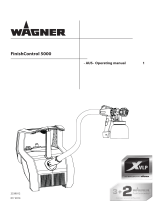
Dok./Rev.-Nr. 196701_20181101
Overview ............................................................................................3
Use ...................................................................................................... 4
Package contents/part list ............................................................... 6
General information ...........................................................................7
Reading and storing the user manual .................................................. 7
Explanation of symbols ........................................................................... 7
Safety ................................................................................................. 8
Proper use .................................................................................................. 8
Residual risks .............................................................................................8
General power tool safety instructions ................................................. 9
Special safety instructions for spray guns ........................................... 12
Supplementary safety instructions ......................................................12
Start-up ............................................................................................. 13
Checking the paint spray system and package contents .................13
Selecting the material and spray unit ..................................................14
Adding material .......................................................................................15
Fitting/changing the spray unit ............................................................16
Operation .......................................................................................... 17
Switching the paint spray system on and off ......................................17
Adjusting the spray pattern ...................................................................18
Controlling the flow of material .............................................................18
Setting the spraying width ....................................................................19
Replacing the nozzle set ......................................................................... 19
Application information ........................................................................ 20
Maintenance and care ...................................................................... 21
Cleaning the spray unit...........................................................................21
Cleaning the motor unit ......................................................................... 23
Changing the air filters .......................................................................... 24
Storage .............................................................................................24
Troubleshooting ...............................................................................25
Spare parts and accessories ............................................................26
Technical data ..................................................................................26
Noise/vibration information ...........................................................27
Disposal .............................................................................................29
Disposing of the packaging .................................................................. 29
Disposing of the paint spray system ....................................................29
Declaration of conformity ............................................................... 30
Contents






















